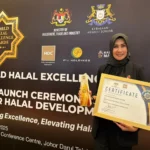Pahami Tujuan Hingga Pentingnya Melakukan Corrective Maintenance!
Diposting pada April 17, 2024 oleh Nur Wachda Mihmidati

Dalam dunia yang terus berkembang ini, peralatan dan sistem yang kompleks menjadi semakin penting dalam mendukung operasi bisnis yang lancar. Namun, tidak dapat dihindari bahwa bahkan peralatan terbaik pun akan mengalami kerusakan atau kegagalan dari waktu ke waktu. Di situlah peran corrective maintenance menjadi krusial. Corrective maintenance, atau pemeliharaan korektif, adalah pendekatan yang diperlukan untuk memperbaiki kerusakan atau kegagalan dalam peralatan atau sistem setelah terjadi. Dalam artikel TransTRACK ini, kami akan menjelajahi pentingnya jenis maintenance ini dalam menjaga kelancaran operasional, mengurangi biaya tak terduga, dan memastikan ketersediaan sistem yang kritis bagi kesuksesan bisnis.
Apa Itu Corrective Maintenance
Corrective maintenance adalah jenis pemeliharaan yang dilakukan untuk memperbaiki atau mengoreksi kerusakan atau kegagalan dalam peralatan atau sistem setelah terjadi. Ini dilakukan setelah masalah muncul dan bertujuan untuk mengembalikan peralatan atau sistem ke kondisi operasional yang diinginkan. Tujuannya adalah untuk memperbaiki kerusakan yang terjadi dan mengembalikan fungsi peralatan atau sistem sesuai dengan spesifikasi yang ditentukan. Biasanya, jenis maintenance ini dilakukan secara reaktif setelah terjadi kegagalan atau kerusakan, meskipun dalam beberapa kasus, tindakan perbaikan juga dapat dijadwalkan secara terencana jika kerusakan atau kegagalan yang mungkin terjadi dapat diprediksi.
Tujuan Corrective Maintenance
Tujuan corrective maintenance adalah:
Memelihara ketersediaan sistem atau peralatan
Ketersediaan sistem atau peralatan adalah faktor kritis dalam menjaga kelancaran operasi suatu organisasi atau perusahaan. Setiap kali terjadi kerusakan atau kegagalan, sistem atau peralatan menjadi tidak tersedia untuk digunakan, yang dapat mengganggu proses bisnis, produksi, atau layanan. Dengan melakukan corrective maintenance, peralatan atau sistem dapat segera diperbaiki, meminimalkan waktu tidak aktif (downtime), dan memastikan bahwa mereka tetap tersedia untuk digunakan oleh pengguna atau staf.
Mengurangi pengeluaran operasional
Downtime yang tidak terencana atau kerusakan yang parah dapat menyebabkan biaya tambahan yang signifikan, seperti biaya perbaikan yang lebih tinggi, kehilangan pendapatan akibat berhentinya produksi atau layanan, atau bahkan biaya reputasi jika pelanggan atau pengguna kecewa. Dengan melakukan corrective maintenance secara tepat waktu, organisasi dapat menghindari atau meminimalkan biaya tambahan yang terkait dengan kegagalan sistem atau peralatan.
Memperpanjang masa pakai sistem atau peralatan
Setiap kali sistem atau peralatan mengalami kerusakan atau kegagalan dan diperbaiki dengan corrective maintenance, ini membantu memperpanjang masa pakai mereka. Dengan melakukan perawatan dan perbaikan secara teratur, organisasi dapat memperpanjang umur pakai sistem atau peralatan, mengurangi kebutuhan akan penggantian yang mahal, dan mengoptimalkan pengembalian investasi atas aset tersebut.
Meningkatkan kualitas layanan atau produk
Sistem atau peralatan yang berfungsi dengan baik akan membantu organisasi untuk memberikan layanan atau produk dengan kualitas yang lebih tinggi kepada pelanggan atau pengguna. Dengan memastikan bahwa sistem atau peralatan tetap dalam kondisi optimal, corrective maintenance membantu menghindari kesalahan atau cacat yang dapat mengurangi kualitas produk atau layanan yang disediakan oleh organisasi. Ini dapat meningkatkan kepuasan pelanggan, memperkuat reputasi merek, dan mendukung pertumbuhan bisnis jangka panjang.
Alasan Penting Melakukan Corrective Maintenance
Melakukan corrective maintenance memiliki sejumlah alasan penting, termasuk:
Meminimalkan waktu yang diperlukan
Dengan melakukan perbaikan secara cepat setelah terjadi kegagalan atau kerusakan, corrective maintenance membantu meminimalkan downtime atau waktu tidak aktif. Hal ini penting karena downtime dapat mengganggu operasi bisnis, produksi, atau layanan, serta menyebabkan kerugian finansial. Dengan memperbaiki masalah dengan cepat, organisasi dapat mengurangi dampak negatif dari downtime yang tidak terencana.
Membuat para pekerja lebih fokus
Ketika terjadi kerusakan atau kegagalan, pekerja sering kali harus mengalihkan perhatian mereka dari tugas utama mereka untuk menangani perbaikan atau troubleshooting. Dengan melakukan corrective maintenance secara teratur, organisasi dapat menghindari gangguan yang tidak terduga dalam tugas-tugas rutin para pekerja. Hal ini memungkinkan mereka untuk tetap fokus pada tugas-tugas mereka yang utama dan meningkatkan produktivitas secara keseluruhan.
Menghemat biaya
Meskipun corrective maintenance mungkin membutuhkan biaya untuk melakukan perbaikan atau penggantian komponen yang rusak, biaya ini seringkali lebih rendah daripada biaya yang terkait dengan downtime tidak terencana atau kerusakan yang lebih serius. Dengan melakukan perbaikan secara teratur dan tepat waktu, organisasi dapat menghindari biaya tambahan yang terkait dengan kegagalan sistem atau peralatan yang tidak terencana, seperti biaya perbaikan darurat atau kehilangan pendapatan akibat berhenti produksi.
Dengan demikian, melakukan corrective maintenance secara konsisten dan efisien dapat membantu organisasi meminimalkan gangguan operasional, meningkatkan produktivitas tenaga kerja, dan mengoptimalkan penggunaan sumber daya finansial.
Dalam dunia bisnis yang kompetitif, menjaga armada kendaraan dalam kondisi operasional yang optimal adalah kunci kesuksesan. Dengan memanfaatkan solusi Vehicle Maintenance System dari TransTRACK, Anda dapat mengambil langkah proaktif dalam memastikan ketersediaan armada yang konsisten. Jangan biarkan kegagalan atau kerusakan yang tidak terduga mengganggu operasi bisnis Anda. Dapatkan kontrol penuh atas pemeliharaan armada Anda dan tingkatkan efisiensi serta kehandalan dengan TransTRACK. Segera kunjungi situs web mereka hari ini untuk memulai langkah pertama menuju pemeliharaan kendaraan yang lebih baik dan lebih efisien.
Postingan Terbaru
Topik :
 English
English









